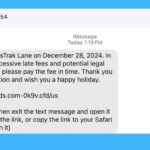Protecting Your 401(k): Essential Strategies to Prevent Identity Theft and Fraud

The Value of Your 401(k) and the Threat of Cybercriminals
Your 401(k) is likely one of your most valuable financial assets, representing years of hard-earned savings for a secure retirement. Unfortunately, scammers are acutely aware of this and are constantly devising new methods to infiltrate these accounts. Since many of us don’t regularly review our 401(k) balances, suspicious activities can go unnoticed for too long, giving cybercriminals a significant advantage.
As retirement approaches, the stakes become even higher. Not only have you accumulated a considerable sum, but a successful breach could leave you vulnerable at a critical time when your savings should be working for your future. However, with the right precautions, you can significantly reduce the risk of falling victim to such scams.
How Cybercriminals Target Your 401(k): Common Tactics
Understanding the Methods of Attack
Contrary to popular belief, hackers often don’t need to “break into” your accounts through complex cyberattacks. In fact, 99% of breaches occur because individuals unwittingly give scammers access. Social engineering, phishing, and other manipulative tactics are frequently employed to trick users into revealing sensitive information.
Additionally, traditional scams—less sophisticated but equally effective—are commonly used. These may include fake emails, fraudulent phone calls, or impersonation of trusted entities to gain access to your personal data.
Protecting Your Personal Data from Exploitation
Maintain Good Digital Hygiene
The foundation of cybersecurity is consistently practicing good habits. Keep your personal information—such as contact details, employment history, date of birth, and addresses—private and secure. Data brokers often collect and sell this information, making it easier for scammers to target you. Alarmingly, some of these brokers have been caught deliberately selling data belonging to older adults, who are then more vulnerable to elder fraud.
Remove Your Data from Unwanted Databases
Your personal data is a powerful tool in a cybercriminal’s arsenal. Using reputable data removal services can help minimize your online footprint. While no service guarantees complete removal, regular monitoring and automated deletion can significantly decrease your exposure over time.
To check if your information is already publicly available, consider using free online scans that identify where your data appears on the web. Protect your privacy at Cyberguy.com/Delete or Cyberguy.com/FreeScan.
Strengthening Your Account Security
Create Strong, Unique Passwords
Never reuse passwords across multiple sites. Instead, opt for complex, random combinations of at least eight characters, including numbers, symbols, and a mix of uppercase and lowercase letters. Using a password manager can simplify this process by securely storing and generating strong passwords, reducing the risk of breaches.
For the latest recommendations, check out expert-reviewed password managers at Cyberguy.com/Passwords.
Enable Multi-Factor Authentication (MFA)
If your provider offers MFA options, activate them for an added layer of security. MFA requires a second verification step—such as a text message, authentication app, or biometric scan—making unauthorized access much more difficult.
Regular Monitoring and Vigilance
I recommend logging into your 401(k) account once a month to review activity and look for any irregularities. Many providers allow you to set up alerts for logins, withdrawals, or changes in credentials. These notifications can help you detect unauthorized access early.
When accessing your account from public Wi-Fi at cafes or airports, always use a trusted VPN service to encrypt your connection and prevent interception of sensitive information.
Immediate Action Steps if You Suspect Fraud
If you notice suspicious activity or believe your account has been compromised, act quickly:
- Contact your 401(k) provider immediately to freeze or lock your account.
- Notify your HR department or plan administrator if your plan is through your employer.
- File a report with the relevant authorities, such as IdentityTheft.gov or the Federal Trade Commission.
- Place a fraud alert or credit freeze with major credit bureaus to prevent further identity theft.
- Document everything—dates, suspicious emails or calls, and names of contacts—to assist investigations.
- Review your bank accounts, credit cards, and other investments for any signs of unauthorized activity.
- Change your passwords and enable multi-factor authentication on all affected accounts.
Remaining Vigilant Against Future Threats
Fraudsters may attempt to contact you again, posing as recovery agents or investigators. Be cautious of unsolicited contacts requesting additional information or payments. Always verify identities through official channels before sharing sensitive data.
The sooner you respond to potential threats, the greater your chances of minimizing damage and recovering lost assets. Remember, your 401(k) is meant to secure your future, not fund scams. Small, consistent security habits—like monitoring your account, using strong passwords, and enabling alerts—are your best defenses against cyber threats.
Stay One Step Ahead
If your 401(k) were drained tomorrow, how quickly would you notice? Preventative action today can save you from devastating losses later. Regularly reviewing your account, safeguarding your personal data, and staying vigilant are key to protecting your retirement savings.
For more tips and updates on cybersecurity, consider subscribing to trusted security newsletters and resources. Your proactive efforts now can make all the difference in preserving your financial future.




